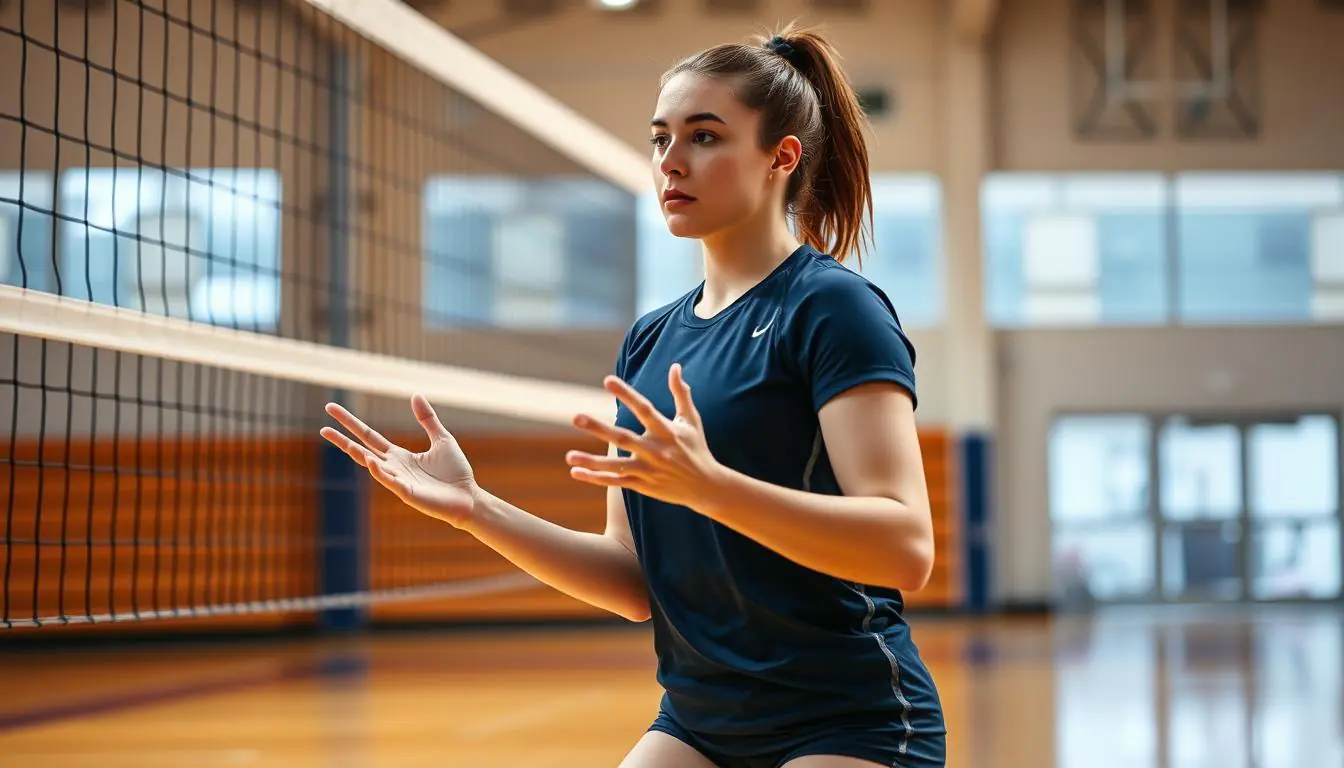Every volleyball setter knows the thrill of a perfect set. It can turn a simple play into a game-changer. I learned that to be great, you need more than talent. You need precision, the right gear, and endless practice.
In this guide, I’ll share how special volleyball setter nets can boost your skills. Whether you’re in high school or aiming for college, learning to set well can take your game up a notch.
From my experience, the right volleyball setter net is more than just equipment. It’s a key to unlocking your full court performance. We’ll dive into top training methods, advanced techniques, and expert advice to improve your setting.
Key Takeaways
- Master precision setting techniques with specialized volleyball nets
- Learn essential skills for becoming an elite volleyball setter
- Understand the critical role of net training in skill development
- Discover advanced drills to enhance court performance
- Develop strategic thinking and game awareness
Understanding the Role of Volleyball Setters
In volleyball, setters are the strategic minds. They turn simple plays into amazing moments. They are like the quarterbacks, leading the team’s attack with skill and strategy.
Volleyball setters do more than just touch the ball. They link defense and attack, making key decisions fast. Their job needs both technical skill and smart thinking.
The Setter’s Strategic Position
Setters used to start in net zone 6. But now, thanks to Gold Medal Squared, they can start anywhere. This lets them adjust based on passing and team play.
- Primary positioning at the net
- Ability to adjust based on pass quality
- Tactical positioning for maximum offensive power
Essential Volleyball Setter Skills
Great setters have many skills:
- Hand-eye coordination
- Quick decision-making
- Precise ball control
- Athletic agility
Setter Leadership on the Court
Setter leadership turns individual skills into a team plan. They talk well and read the other team’s moves. This helps create chances to score and keeps the attack going.
In any formation, setters are key. They decide how well the team attacks. Their fast, smart choices show their true worth on the court.
Setting Techniques and Mechanics
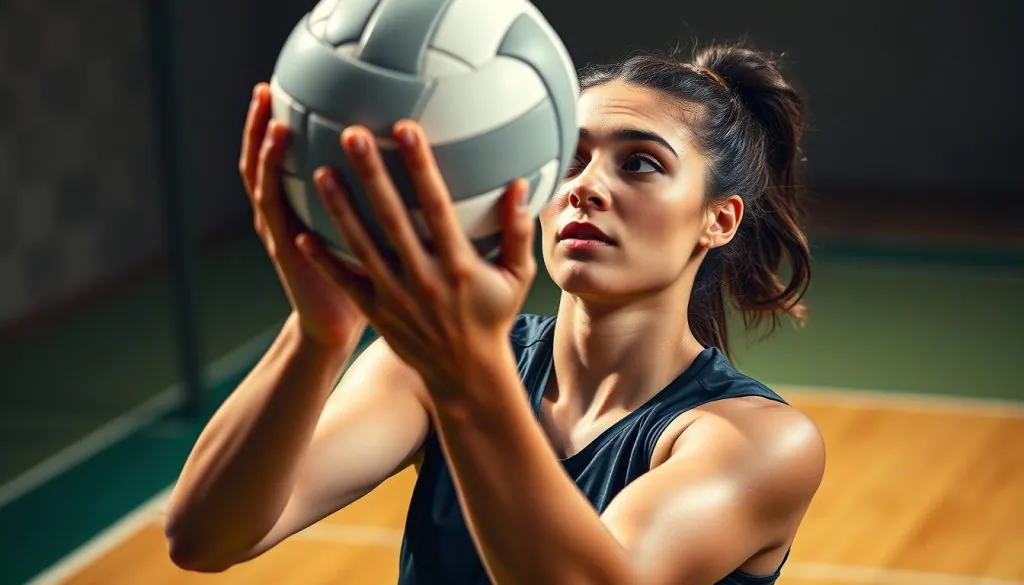
Volleyball setting techniques are key to a strong offense. As a setter, I’ve found that mastering the right mechanics can change the game. The overhead set is the most traditional and precise way to set the ball.
Setting well needs both technical skills and quick thinking. Setters make big decisions in just 0.5 seconds. This can boost a team’s hitting by up to 75%.
- Perfect hand positioning is key for accurate sets
- Body alignment affects the ball’s path
- Good footwork is essential for consistent setting
Improving your setting can make a big difference. Here are some key mechanics to focus on:
- Diamond Hand Formation: Keep your hand shape consistent for better sets
- Work on a left-to-right weight transfer
- Practice setting with your hands high
“A great setter can turn an average team into a championship contender.”
Professional setters who use different techniques can score 20% more. They also keep defenses on their toes. With the right training, setters can get 15% better at accuracy and making quick decisions.
Jump setting and one-handed sets need lots of practice. Daily drills and muscle memory are key. This way, you’ll become a top-notch volleyball setter.
Volleyball Setter Net Training Equipment

Getting better at setting in volleyball takes more than just practice. It needs the right equipment. As a serious volleyball player, I’ve found that good setter training aids really help.
The volleyball training world has changed a lot. Now, there are new tools to help setters get better. Let me show you some top training solutions that can make your setting skills better.
Net Wall Graphic Benefits
The Net Wall Graphic is a new tool for training. It helps setters aim better by showing them where to place the ball. It’s great for:
- Clear visual cues for accurate ball placement
- Versatile training for setters, defenders, and blockers
- Immediate feedback on setting accuracy
Trainer+ System Features
The Trainer+ system is a top choice for setter training. It has amazing features:
| Feature | Specification |
|---|---|
| Height Range | 7.5 feet to 11.5 feet |
| Basket Angle | 45-180 degrees |
| Setup Time | 5-10 minutes |
| Price | $224.99 |
Setting Targets and Training Aids
Here are some volleyball training tools to improve your setting:
- Portable Setter Net: Great for different training spots
- Precision Target Markers
- Weighted Training Balls
- Video Analysis Tools
With the right tools, your practice sessions will get better. You’ll build the muscle memory to be a top volleyball setter.
Fundamental Setting Drills for Precision
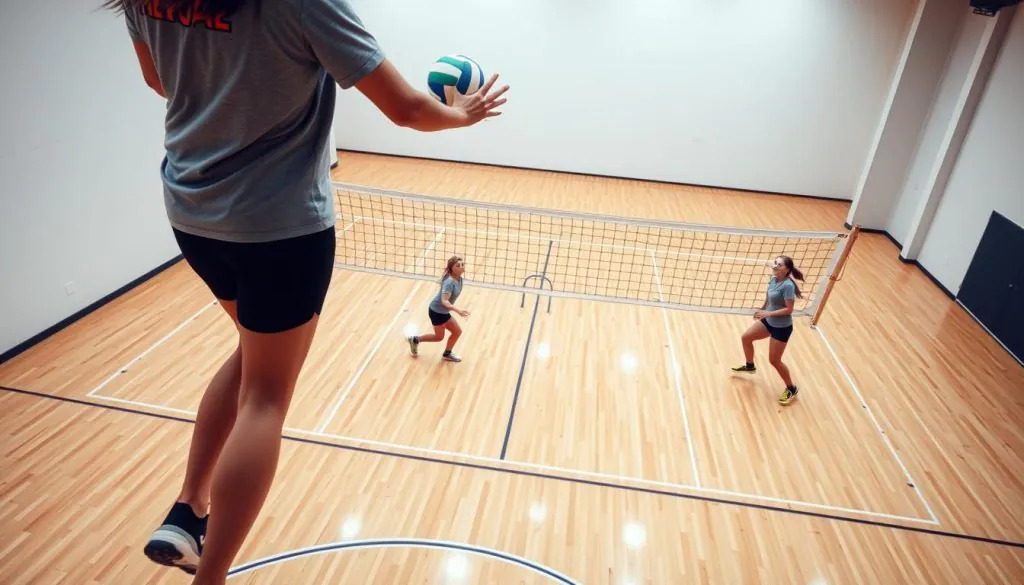
Creating top-notch volleyball setting drills needs a smart plan for setter precision training. I’ll show you key exercises that boost core skills and muscle memory for accurate ball placement.
The “Set and Go” drill is a standout training method. It tests setters both mentally and physically. This drill includes several elements to boost performance:
- Six players take part at once
- Four main setting spots across the net
- Players move through five different areas
- It mixes setting skills with conditioning
In this drill, setters work on:
- Quickly understanding game situations
- Keeping arm and wrist strong
- Practicing sets from pin to pin
- Improving spatial awareness
The drill’s design makes practice more effective. It combines physical conditioning with technical skill improvement. Mental processing is as important as physical action. Players do crunches or twists while waiting to replace a setter. This creates a scenario that feels like the game itself.
Regularly doing these volleyball setting drills helps setters get better at precision. They also gain confidence and learn to make quick decisions, key for top-level play.
Advanced Jump Setting Techniques
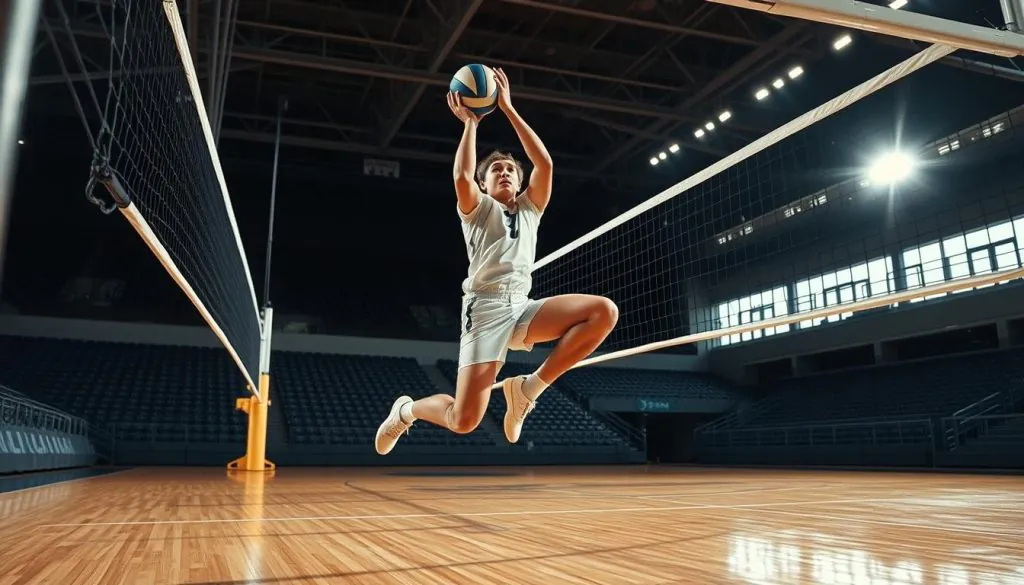
Jump setting is a key skill in volleyball that boosts a setter’s offense. Learning advanced techniques lets players surprise opponents and keep defenses on their toes.
As a setter, I’ve found that jump setting needs precision, timing, and strategy. Being able to set powerful jumps can flip a game’s direction.
Proper Jump Set Timing
Timing is key in advanced setter training. Good jump sets come from:
- Syncing your jump with the incoming pass
- Keeping your body in the right spot
- Practicing a lot to build muscle memory
Distance Management in Jump Sets
Keeping the right distance from the net is vital for jump setting. Each situation calls for a different approach:
| Distance from Net | Setting Strategy | Key Considerations |
|---|---|---|
| Close to Net | Quick, precise sets | Use minimal arm movement |
| Mid-Distance | Flexible set trajectories | Adjust for hitter’s approach |
| Far from Net | High-arc sets | More power and elevation needed |
Common Jump Setting Errors
Spotting and fixing jump setting mistakes is vital for setters. Common errors include:
- Inconsistent jump height
- Improper hand positioning
- Lack of awareness of the court’s sides
By working on these areas, setters can improve their jump setting. This makes them more effective in the game.
Out-of-System Training Strategies
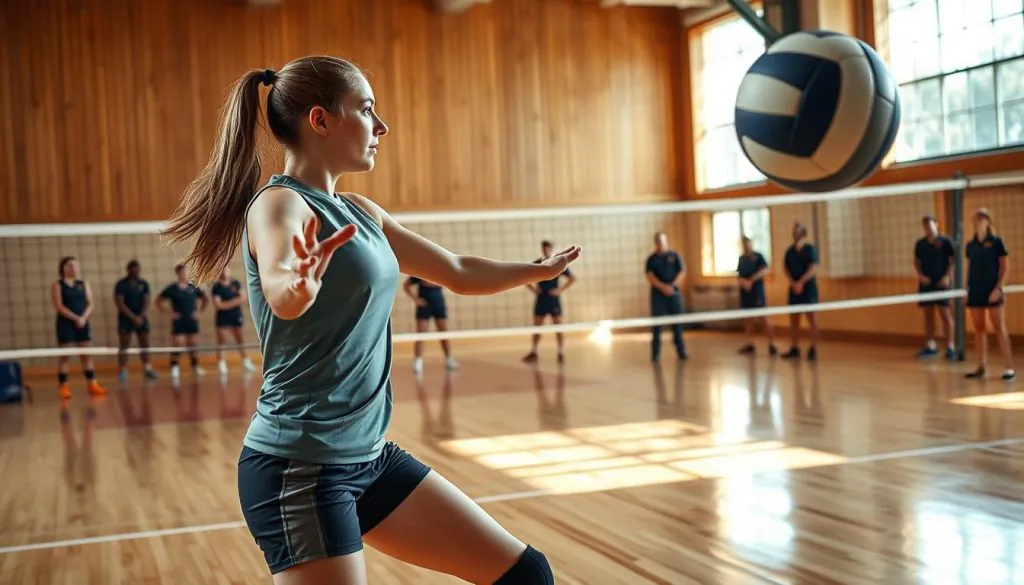
Mastering out-of-system volleyball is all about being adaptable. Teams face out-of-system plays over 60% of the time. This makes it key for success. I’ve come up with ways to turn tough moments into chances to score.
Out-of-system volleyball needs quick thinking and creative solutions. When passes are off, setters must quickly adjust to make the ball hitable. The goal is to keep the offense going, even when things don’t go as planned.
- Limit attacking options to pin hitters when quick attacks are unavailable
- Practice high ball sets to outside hitters
- Develop communication skills for rapid court repositioning
There are ways to get better at adapting:
- Virus Type Drill: Coaches introduce unexpected ball situations
- Simulate scenarios with limited attacking players
- Practice triple blocking techniques
Kevin Hambly, a top coach, suggests spending 60% of practice on out-of-system drills. His teams showed they could turn tough plays into scoring chances.
| Training Focus | Key Objective |
|---|---|
| High Ball Practice | Create consistent outside hitter attacks |
| Narrow Attacking Zone | Develop precise ball control |
| Multiple Contact Scenarios | Improve setter decision-making |
By using these strategies, setters can turn defensive challenges into strong offensive plays.
Strength and Conditioning for Setters
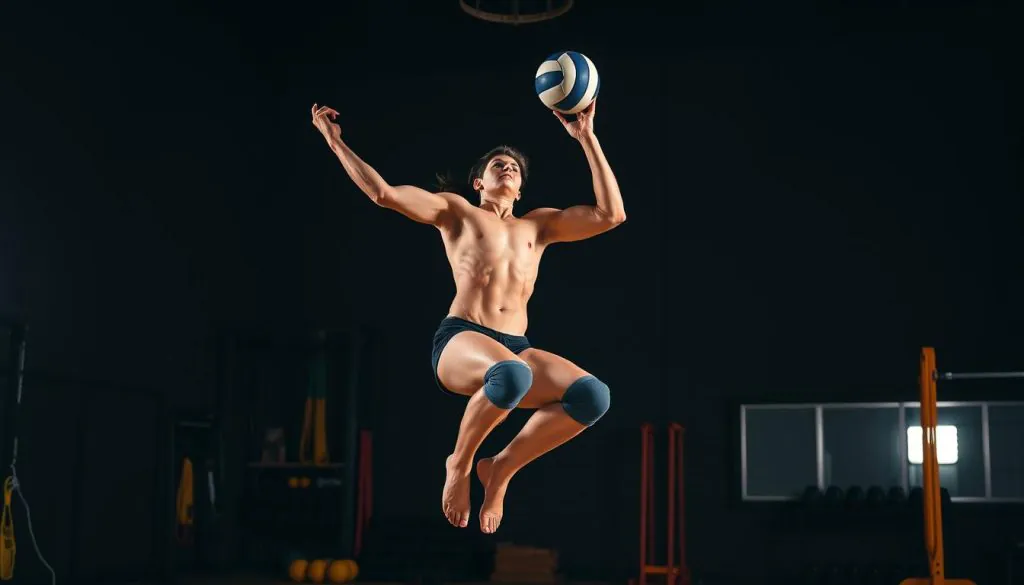
As a volleyball setter, your body is your most important tool. Volleyball setter fitness is more than basic training. It’s about building a strong foundation that supports your role on the court. Setter strength training targets specific muscles and movements for setting.
Elite setters know conditioning is more than lifting weights. It’s about building a balanced, powerful body for volleyball’s demands.
Core Stability: The Foundation of Setting Power
A strong core is your secret weapon in volleyball. I recommend these key exercises for core stability:
- Planks (standard and side variations)
- Russian twists with medicine ball
- Rotational cable exercises
- Stability ball dynamic movements
Shoulder Health and Maintenance
Protecting your shoulders is key for long-term setting performance. Focus on exercises that build shoulder resilience:
- External rotation exercises
- Scapular retraction drills
- Resistance band shoulder mobility work
- Light dumbbell shoulder stabilization routines
Lower Body Power Development
Explosive lower body strength changes your setting game. Incorporate these power-building exercises:
- Plyometric box jumps
- Depth jumps
- Squat variations
- Lunges with rotation
Remember, consistent setter strength training isn’t just about getting stronger—it’s about becoming a more dynamic, resilient volleyball athlete.
Game-Like Scenario Training
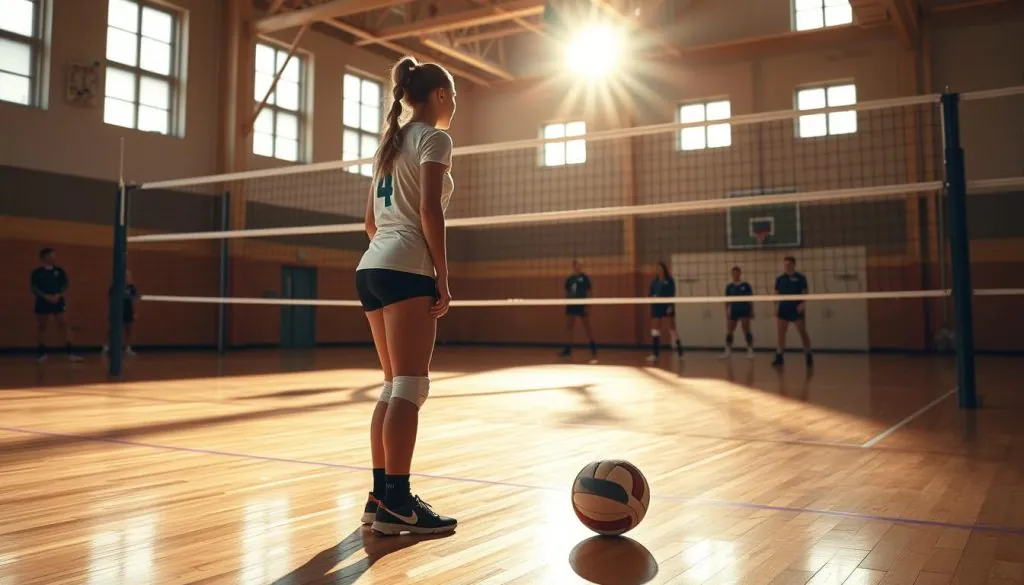
Being a volleyball setter is more than just knowing the game. It’s about making quick, smart decisions. You need to train in ways that test your mind and strategy.
Simulation training is key. It helps setters read the game fast and make quick choices. This kind of training sharpens your thinking and boosts your game performance.
- Implement competitive training formats that mimic real-game pressure
- Utilize small-team configurations to maximize learning opportunities
- Introduce scoring variations that encourage strategic thinking
- Focus on adaptability and quick decision-making
My advice is to do structured drills that challenge you to think fast. For example, play 3-4 player games with special rules. This improves your court awareness and strategy.
Here are some effective training methods:
- Winners Stay On format to maintain competitive intensity
- Blind scoring challenges that introduce unpredictability
- Position-specific scenario training
- Video review sessions for performance analysis
Regularly practicing in these ways can greatly improve your decision-making. It makes you a more confident and flexible player on the court.
Setting Tempo and Ball Control
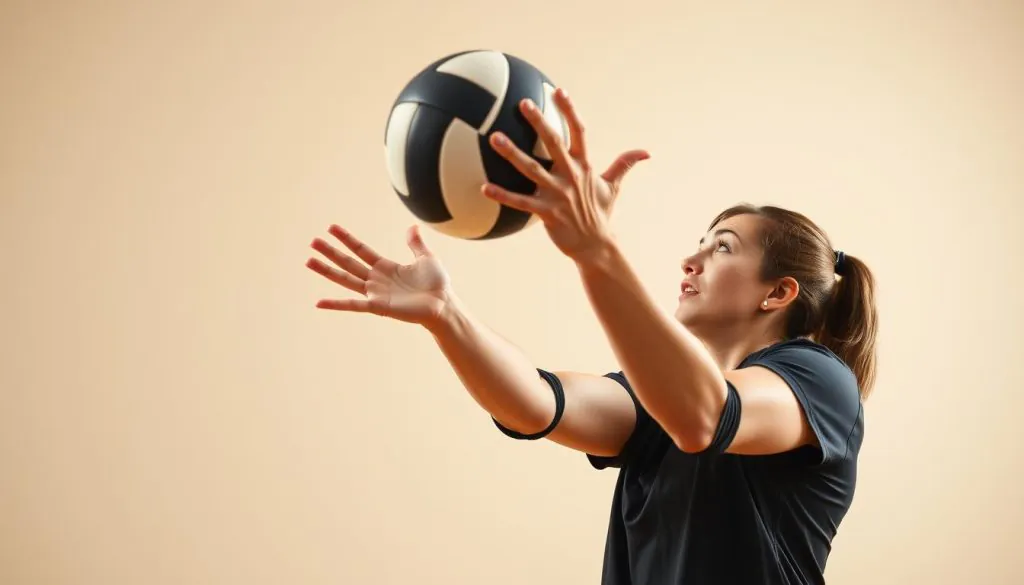
Being a volleyball setter means you must control the ball and tempo. This skill turns a normal offense into a standout one. Being able to set the game’s pace is critical for your team’s attack.
Volleyball tempo isn’t just about passing the ball. It’s about creating chances and keeping the other team on their toes. I’ve learned that precise ball control is what sets good setters apart from the great ones.
Quick Set Variations
Fast sets can change the game in volleyball. Here are some key quick set variations:
- 12 set: The fastest tempo for left-side attackers
- 51 set: Executed when middle attackers are already airborne
- 31 set: Requires exceptional precision and timing
- 71 set: Typically run for right-side hitters
Ball Placement Techniques
Good ball placement needs careful hand positioning and control. Aim to use all ten fingers for optimal setter ball control. A slightly upward angle makes sets consistent and reliable for hitters.
Rhythm and Timing Drills
Improving your set tempo takes practice. Focus on drills that improve:
- Footwork stability
- Hand positioning
- Jump set mechanics
- Decision-making speed
The best setters are not just skilled technically. They’re strategic and can read the court quickly, adapting fast.
Mental Preparation and Decision Making
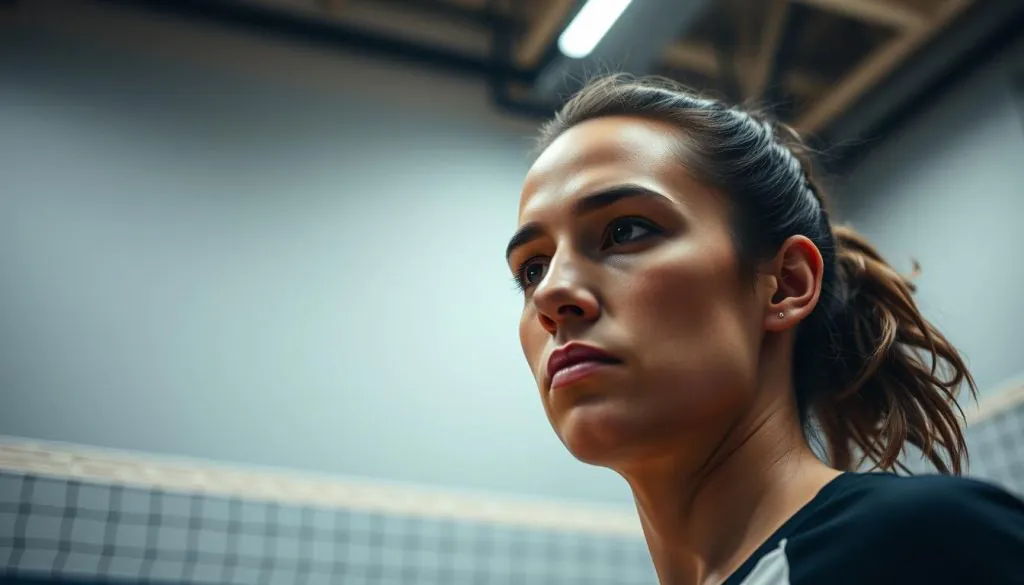
As a volleyball setter, I’ve learned that mental training is just as important as physical skills. Volleyball mental training goes beyond just physical practice. It dives deep into the psychological aspects that make a good setter great.
Setter decision making needs a sharp mental approach. This can greatly improve game performance.
The mental game of setting involves several key strategies:
- Developing unwavering self-confidence
- Creating consistent mental routines
- Managing emotional responses under pressure
- Maintaining focus during challenging moments
Visualization techniques have been my secret weapon in volleyball mental training. I practice imagining successful sets and defensive movements. Mental rehearsal helps create neural pathways that translate directly to court performance.
Key aspects of setter decision making include:
- Reading opposing team’s defensive formations
- Quickly assessing hitter capabilities
- Selecting optimal set trajectories
- Communicating effectively with teammates
Statistics show that setters touch the ball about 98% of the time during team possession. This highlights the importance of mental preparation. By developing strong psychological skills, setters can turn pressure points into strategic play opportunities.
“A setter’s mind is their most powerful weapon on the volleyball court.”
Remember, successful volleyball mental training isn’t about eliminating nerves. It’s about using them for focused, precise performance.
Conclusion
The journey to improve as a volleyball setter is tough but fulfilling. With hard work and smart training, setters can go from basic to amazing. I’ve learned that mastering the setter training guide takes ongoing effort and improving your skills.
Every drill, technique, and mental strategy we’ve talked about helps build a strong setter. Tools like the Net Wall Graphic and Trainer+ system are key for bettering your game. Setting is not just about moving a ball. It’s about making chances, reading the game, and leading your team’s attack.
I urge every setter in training to see the challenge in this role. Keep practicing, stay flexible, and see every problem as a chance to get better. Your skill in setting, talking to your team, and staying calm under pressure will show your success on the court. Becoming a top setter is a never-ending journey of learning, practicing, and getting better.
Your setter skills are only as good as your dedication and desire to improve. Dive into the techniques, stay excited about getting better, and trust in the method of setter training.
FAQ
What makes a great volleyball setter?
A great volleyball setter is precise and has good timing. They must be adaptable and aware of the court. It’s important to have strong hand positioning and body alignment.
They need to read the game quickly. Leadership and decision-making skills are key to guiding the team’s offense.
How important is strength training for setters?
Strength training is essential for setters. It builds core stability, shoulder health, and lower body power. These are vital for performance and injury prevention.
A strong setter can do complex sets consistently. They can also handle the physical demands of long matches.
What equipment can help improve setting skills?
Key equipment includes the Net Wall Graphic and the Trainer+ system. These tools help develop muscle memory and improve precision. They also simulate game-like scenarios during practice.
How can I improve my out-of-system setting?
Improving out-of-system setting requires practicing drills that mimic challenging passes. Focus on communication and quick decision-making. Keep the offense tempo steady, even with off-target passes.
Learn to create scoring chances from tough positions.
What’s the difference between overhead, jump, and bump sets?
Overhead sets use both hands above the head for control and accuracy. Jump sets are faster and can surprise blockers. Bump sets are for emergencies, using forearms to redirect the ball.
How can I develop better mental skills as a setter?
Improve mental skills through visualization and decision-making practice. Learn to read opposing defenses. Stay calm and focused, and understand offensive strategies.
Regular mental training boosts confidence and performance under pressure.
What are the most important drills for setter training?
Key drills include stationary setting, dynamic scenarios, and jump setting practice. Also, focus on out-of-system training and tempo control. Start with basics and move to more complex exercises.
How can I improve my jump setting technique?
To improve jump setting, focus on timing and body positioning. Practice at different distances from the net. Work on core and leg strength for powerful sets.
Practice drills that keep accuracy while in the air.
What role does tempo play in setting?
Tempo controls the offense’s pace and keeps blockers off-balance. Mastering quick sets and precise ball placement creates scoring chances. This makes the offense unpredictable and effective.
How long does it take to become an elite setter?
Becoming an elite setter is a long journey. It requires dedication, consistent practice, and a growth mindset. While progress varies, it takes several years of training and experience.
